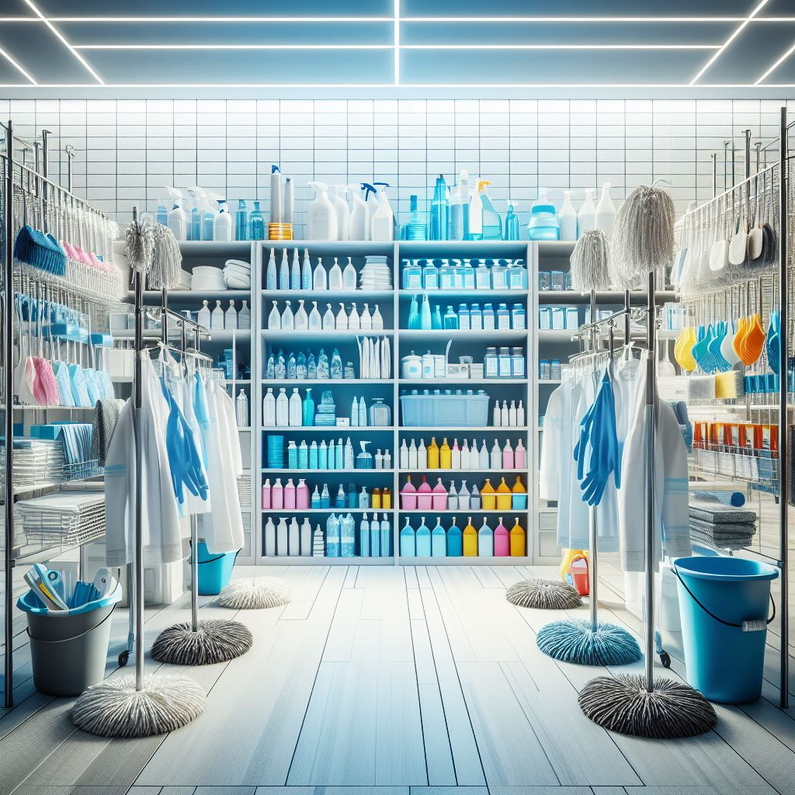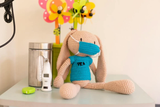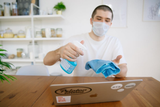Mastering Hospital Hygiene: A Comprehensive Guide to Effectively Clean Hospital Rooms
In the realm of healthcare, maintaining a pristine environment is paramount. Nowhere is this more crucial than in hospital rooms, where meticulous cleaning protocols are essential to safeguard patient safety and curb the transmission of infections and disease.
“Hospital cleanliness transcends mere surface wiping; it's about eradicating risks for both patients and staff.”
So, how do we execute this delicate task with precision and efficiency? Let's delve into the step-by-step process of cleaning a hospital room.
Understanding the Significance of Hospital Room Cleanliness
Before delving into the cleaning procedures, it's imperative to grasp why compromising on hospital room cleanliness is simply not an option.
Hospital-acquired infections (HAIs) pose grave health risks, potentially prolonging hospital stays, leading to fatalities, and escalating healthcare costs. By upholding a sterile environment, healthcare institutions can mitigate such risks and uphold their commitment to delivering high-quality care.
Preparing for the Cleaning Process
The success of an effective cleaning regimen hinges on preparation. Begin by gathering all necessary cleaning materials and personal protective equipment (PPE), such as gloves, gowns, masks, and disinfectants.
Adhere strictly to hospital standards regarding PPE usage to avert any cross-contamination. Familiarize yourself with the room layout and identify high-touch surfaces that warrant extra attention—think doorknobs, light switches, and bed rails.
Executing the Cleaning Procedure
When everything is ready, let’s put on the gloves and begin cleaning with a systematic approach.
First, dispose of the visible garbage and clutter in the room by putting them into the designated bins. Then, continue to clean the surfaces with hospital disinfectants focusing on high-touch point areas.
Push hard enough to utilize friction while cleaning to ensure the complete disinfection, and provide enough soak time for the disinfectant so that it can kill the pathogens effectively.
Addressing Specific Areas of Concern
Certain areas of the room require special attention.
Pay particular heed to patient bathrooms, where moisture and organic matter provide ideal breeding grounds for bacteria. Thoroughly sanitize these areas, including toilet seats, sinks, and faucets. Additionally, ensure that medical equipment such as IV poles and monitoring devices are cleaned and disinfected in accordance with manufacturer guidelines..
Verifying the Cleanliness of the Room
Following the cleaning process, it's imperative to verify the efficacy of your efforts.
Thoroughly inspect the room to ensure all surfaces have been adequately cleaned and disinfected. Employ ultraviolet (UV) light or ATP testing to detect any residual contaminants that may have been overlooked. Document cleaning activities, including date, time, and personnel involved, to uphold accountability and regulatory compliance.
| Pro- Tip: Empower patients and visitors to play an active role in maintaining a clean and hygienic healthcare environment. Display educational materials and signage prominently throughout the facility, providing clear instructions on proper hand hygiene practices, respiratory etiquette, and infection prevention measures. |
Leveraging the Effectiveness of Disinfectant Wipes
Using disinfectant wipes, a quick and also effective way to clean the high-touch surfaces in hospital rooms is provided. Wipes are pre moistened with the disinfectant solutions, which enable the disinfection without the need for any additional supplies or equipment.
Pre-moistened with disinfectant solutions, wipes facilitate hassle-free disinfection without the need for additional supplies or equipment. They're convenient and disposable, ideal for sanitizing surfaces like countertops, bedside tables, and medical devices. Their single-use design reduces the risk of cross-contamination and ensures uniform application of the disinfectant solution.
The introduction of disinfectant wipes into the hospital room cleaning protocols has a lot of potential to increase the efficiency and also effectiveness, which can lead to much better infection control practices.
Implementing the Best Practices to Improve Efficiency
To make the cleaning process much more effective and also efficient, you may want to introduce some practices that can better suit your particular healthcare institution.
Create a cleaning checklist that lists the specific tasks and the proposed frequency for each area of the hospital room. Deploy the cleaning teams or individuals entrusted with the execution of these activities that will be done diligently and also methodically at all times.
The use of colour-coded cleaning supplies can greatly reduce the likelihood of cross-contamination and also promote the right usage of disinfectants.
Provide training programs to the staff members on current cleaning practices, safety standards, and also infection control management.
Periodically evaluate the performance of your cleaning practices by conducting audits and feedback mechanisms, making some modifications where needed to ensure continued top-cleanliness standards.
Focus more on the need for communication and collaboration between the health workers to create an environment of accountability and shared responsibility in ensuring cleanliness.
Leveraging Technology for Enhanced Disinfection
Innovation can help change the hospital room cleaning practices in the age of fast technology development and growth. Examine the application of automated cleaning technologies including UV robots or hydrogen peroxide vapour systems to improve the manual cleanings and kill hard-to-eliminate pathogens.
High-tech options are able to reach the many inaccessible places and offer an added guarantee for disinfection. Invest in antimicrobial surfaces or coatings that can prevent the bacterial and viral growth, minimising a lot of the spread of contaminants between cleanups.
Use electronic monitoring systems to monitor the progress of cleaning activities, making sure that they are conducted according to the preplanned schedules and within compliance with regulations.
Take advantage of the digital tools for training and documentation purposes allowing all the different departments to share information efficiently.
Through the adoption of technology-based methods, healthcare facilities could effectively improve cleanliness procedures by making them more effective and productive while also ensuring a safe environment for both patients and staff.
By embracing technology-driven methods, healthcare facilities can enhance cleanliness procedures, bolstering effectiveness and productivity while safeguarding patients and staff.
Conclusion
Achieving exemplary cleanliness in hospital rooms demands a blend of innovation and adherence to time-honored best practices.
By embracing standardized cleaning protocols, leveraging technology to optimize disinfection measures, and prioritizing continuous improvement, healthcare institutions can attain unprecedented levels of cleanliness and infection control.
Remember, cleanliness transcends mere duty—it reflects a commitment to patient care and safety. Equip yourself with the knowledge and tools to meticulously disinfect hospital surroundings, ensuring the well-being of all who pass through.
Recent Posts
-
Mastering Hospital Hygiene: A Comprehensive Guide to Effectively Clean Hospital Rooms
In the realm of healthcare, maintaining a pristine environment is paramount. Nowhere is this more …6th Apr 2024 -
How to Disinfect Kids Toys: A Guide for Parents
In today's world, maintaining a high level of hygiene is more crucial than ever, especially for o …6th Apr 2024 -
Mastering Hygiene: Safely Cleaning Your Laptop Screen and Keyboard
In today's fast-paced digital age, laptops have become indispensable tools, streamlining work and …6th Apr 2024




